Little Patrons, Big Ideas: New approaches in early learning have implications for public libraries
While traditional storytime isn’t going away, public libraries are exploring new strategies to serve toddlers and preschoolers, from STEM for babies and Touchpoints for Libraries, to new guidance on screen time.
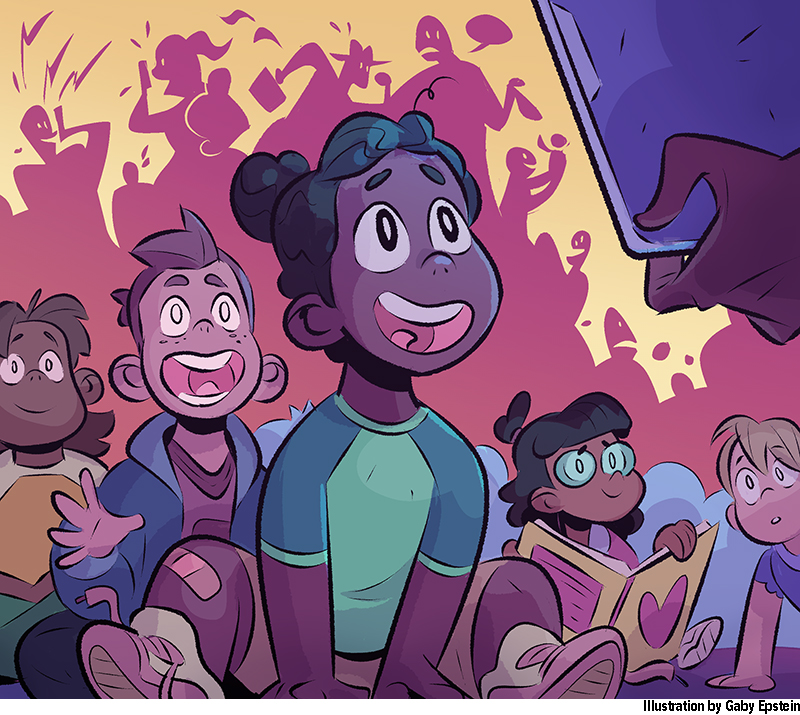
Just over a year ago, the Morton Grove (IL) Public Library, located in a Chicago suburb, began offering special storytime sessions to help young children deal with emotions such as fear and anger. The library also provides storytimes related to potty training.
Amy Goodchild, a youth services associate who has a background in school counseling, came up with the ideas. “We’re using books as tools to address different situations, both giving parents the tools they need to be successful [and] showing people what we have in the library,” says Courtney Schroeder, who oversees youth services at the library.
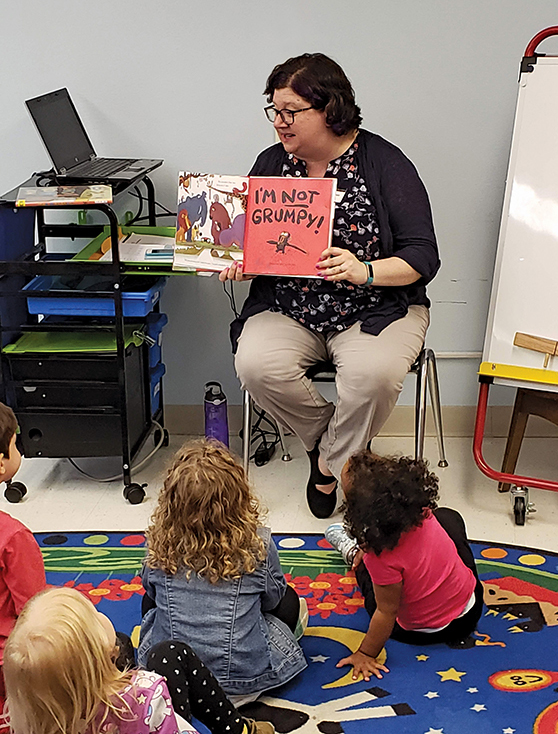 |
Morton Grove’s mission to help little patrons handle big emotions is one of many bold innovations in early learning services that include addressing difficult feelings, tech exposure, and guiding parents through developmental milestones.
While traditional storytime isn’t going away, public libraries are exploring new strategies to introduce important concepts to toddlers and preschoolers in age-appropriate ways, while also providing support to families—and to the librarians who serve them.
“Reading stories and enjoying books with children is always going to be our bread and butter, but we’ve started to define literacy in a broader way,” says Rachel Payne, coordinator of early childhood services at Brooklyn Public Library (BPL) and an SLJ First Steps columnist.
For BPL and other libraries, that means looking at complex topics, early, while continuing to provide parents with information on child development and the latest thinking on digital exposure.
One new program at BPL, Science Baby, for children from birth to age three, introduces little ones to concepts such as gravity and chemical reactions through “story, repetition, and play.”
“Studies show that children explore and investigate their world and can start understanding these concepts at a younger age, and we really want to embrace that sort of learning and discovering,” says Payne.
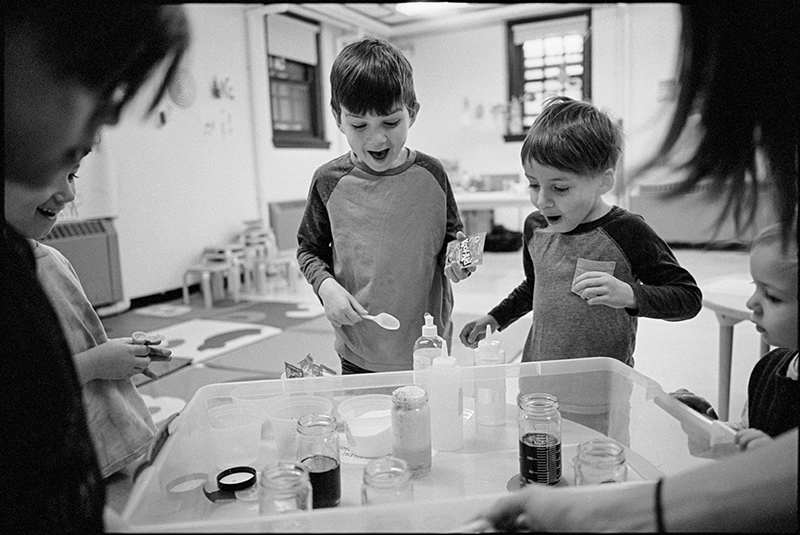 |
| Young participants enjoy a science program at Brooklyn Public Library. |
Payne has also introduced storytimes to explore and discuss gender and race with the youngest patrons and their caregivers.
“Play is really a key part of literacy and growth and development,” she adds. “So we can have programs that support that. We see our programs as both something fun for children [and] a way to support parents and caregivers who are with them most of the day.”
Libraries including the Baltimore County Public Library now have elaborate play areas for young children that rival what might be found in a top children’s museum, and BPL schedules frequent playdates that allow toddlers and preschoolers to have fun while honing their fine-motor skills and learning about concepts like spatial relations.
While anyone can show up for most of the storytimes at Morton Grove, the “bibliotherapy” sessions, as Schroeder calls them, require preregistration. They always attract a big crowd.
During these events, parents learn, for example, that the library has DVDs on potty training, and they’re directed to books that help young children understand feelings such as sadness. These sessions also give parents an opportunity to meet other parents and share stories about how their families contend with events including accidents and meltdowns.
“We’re exposing parents to different areas of the collection they may not know we have and also getting them in the library and giving them a community that they can discuss this kind of stuff with,” says Schroeder. “I think that fits with the library mission and vision. We try to be in the community. All libraries are now community spaces, and I think this falls under that umbrella.”
“Touchpoints” for early learning librarians
Any time a library opens its doors to young children, staff has to be prepared for some typical toddler behavior. It’s not unusual for a child to get up and walk or run away during storytime. Some might interrupt the story repeatedly to share their observations, while others might have a tantrum when told it’s time to sit down and listen. All of this can be stressful for librarians, particularly those who have less experience and training with this age group.
Librarians in California are getting some help to deal with these situations through Touchpoints in Libraries, a unique program whose work with young children and their families is based on the groundbreaking work of the late pediatrician T. Berry Brazelton at Boston Children’s Hospital.
It developed out of the larger Brazelton Touchpoints philosophy, which the Brazelton Touchpoints Center defines as a “set of values, principles, and practices for professionals committed to creating strong partnerships with families of young children.” The program gives librarians practical ways to work with families that focuses on the family’s strengths. The Touchpoints method has been used to train people who work with young children and their families, including social workers and police officers.
In 2015, a California State Library programs consultant, Suzanne Flint, reached out to the Brazelton Touchpoints Center about developing a program for librarians, and Touchpoints in Libraries was born.
Touchpoints also refers to certain stages in a child’s development when the child and his or her family may need some extra support. For example, a 12-month-old who’s newly walking may begin to wake up frequently during the night due to excitement about his or her newfound independence.
“These are times in children’s development that are predictable,” says Mindy May, the center’s director of partnership and professional development. “We know that as kids are developing and working on mastering new skills, they actually become disorganized. They lose some of the skills that they had mastered, and they kind of fall apart. When that happens, families often fall apart right along with them. We call that a Touchpoint because it’s an opportunity for us to join with the family when families are most open to support.”
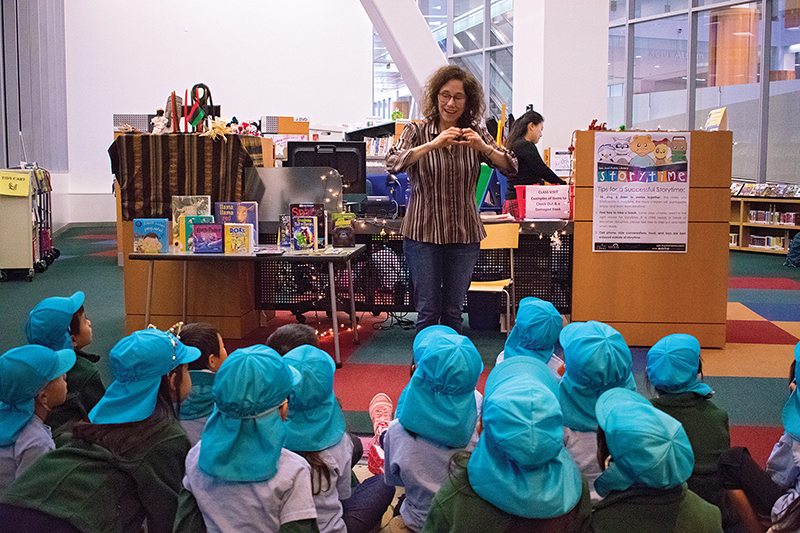 |
| Storytime at San Jose Public Library, which has embraced Touchpoints for Libraries. |
Lisa Giannotti is a Touchpoints in Libraries trainer and the literacy program specialist for San José Public Library’s early education department. She says a big part of the program, in addition to supporting families, is training staff to shift their mind-sets where interactions with young children and their families are concerned. Staff members are taught to trust parents to handle problems with their children that may arise during their time in the library.
“The response across the board has been it’s so much nicer,” says Giannotti. “It’s less stressful on me. I can make connections and most of them have said, ‘You know what? Whatever the situation is, it usually resolves itself. The parents handle it. The caregiver handles it, or the family leaves in a couple minutes.’”
Staff is also taught not to make assumptions about parents. For example, a parent being on the phone during storytime can make it look like they are uninterested in what’s happening. But it may be that the parent is trying to make a doctor’s appointment, looking for housing, or attending to another important matter.
The training also includes information about child development, so library staff can understand why a toddler might be climbing on a display or running around the stacks.
Nari Ferderer is also a Touchpoints in Libraries trainer and the early literacy librarian for the San José Public Library’s early education department. She says the training is designed to help families feel welcome in the library.
“One thing that may have made them feel embarrassed or in the spotlight in the library isn’t a reason to not come back,” says Ferderer. “Just because their child was acting up, was being loud, rambunctious, whatever the scenario, that they weren’t made to feel ashamed for it. That’s just childhood, and we appreciate that. We’re happy to have that family in the library [and] we like to think they feel like the library is a place for them to go at whatever stage they’re in with their child’s development and their family routine.”
Toddlers and screen time
Libraries are continuing their dedication to supporting families in learning how to navigate the ever-changing digital media landscape with their young children.
In April, the World Health Organization (WHO) issued new guidelines calling on parents not to allow children younger than two to spend any time in front of screens. WHO also called for screen time to be limited to an hour a day for children between two and four.
These new guidelines are similar to recommendations from the American Academy of Pediatrics that children younger than two avoid digital media with the exception of video chatting to keep in touch with distant relatives, and children from two to five should limit their digital media consumption to one hour of high-quality programming a day.
But just what is high-quality programming? And how bad is it for a parent to hand a child a tablet for a few minutes in order to get something done around the house?
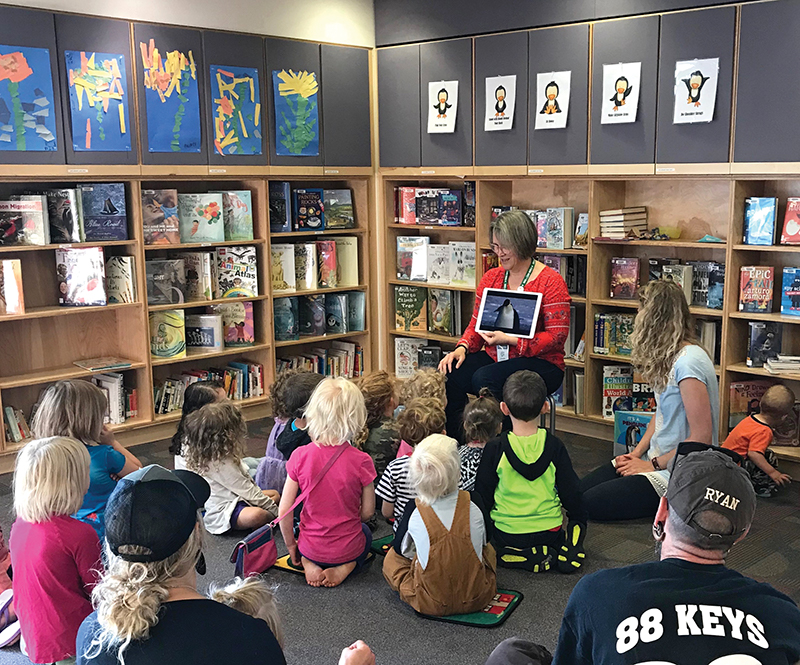 |
| Claudia Haines shows a BBC Earth video about penguins at Homer (AK) Public Library. |
Claudia Haines helps parents answer these questions all the time through her job as the youth services librarian at the Homer (AK) Public Library.
“A lot of information that parents get makes them feel bad if they use new media with young children, and so they’re really looking for ways to use it well,” says Haines.
Haines incorporates digital media in her programming for young children in several ways. While reading about penguins during storytime, she might show a video that allows the children to see penguins in action.
“I use it as an opportunity for kids to learn more information but also to kind of create conversation around that, and then we will use that media to inspire active play or art,” says Haines.
Her library also features two iPads that young children can use. Since iPads can be mesmerizing, especially for kids who don’t have regular access to the technology, Haynes takes steps to make sure they don’t just park in front of the tablet all day.
One of the iPads is mounted on a wall and has just one app at a time for use by young patrons.
“It’s really to kind of nudge kids along, so they’re focusing on the content versus just using the iPad,” says Haines. “I put up one app at a time to make sure they have time to explore other resources or other materials at the library like the puzzles, the books, and the games and activities.”
Haines rotates the apps on the tablet, which are selected based on quality. Ones recently available on the iPad include Space (Tinybop), Endless Alphabet (Originator), and Astro Cat’s Solar System (Minilab).
The library’s other iPad is mounted on a table with two sets of headphones and two seats to allow two children to use it together. It includes a few subscription-based apps that the library pays for access.
Haines says parents come to her all the time with questions about how to select good digital media for their children. She recommends a rubric she created to help parents evaluate apps, which can be found on her blog, nevershushed.com. High-quality story or toy apps should have intuitive way-finding, developmentally appropriate cues for interactivity, and many other features, according to the rubric.
Such advice, along with ongoing support and resources on the ups and downs of raising young children, remains at the heart of what librarians do, BPL’s Payne says. “Libraries are always responsive to the needs of the community—and the needs of the audience that they’re working with.”
Marva Hinton is a contributing writer for Education Week and the host of the ReadMore podcast, an interview show that primarily features authors of color.
RELATED
The job outlook in 2030: Librarians will be in demand
The job outlook in 2030: Librarians will be in demand
ALREADY A SUBSCRIBER? LOG IN
We are currently offering this content for free. Sign up now to activate your personal profile, where you can save articles for future viewing






Add Comment :-
Comment Policy:
Comment should not be empty !!!